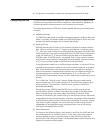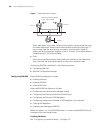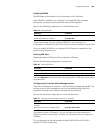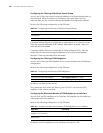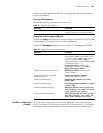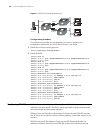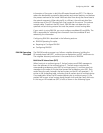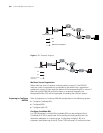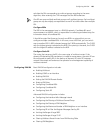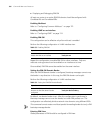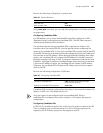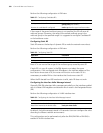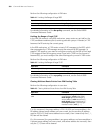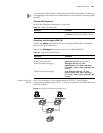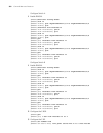
Configuring PIM-SM 195
calculate the RPs corresponding to multicast groups according to the same
algorithm, after receiving the C-RP messages that the BSR advertises.
One RP can serve multiple multicast groups or all multicast groups. Each multicast
group can only be uniquely correspondent to one RP at a time rather than multiple
RPs.
Configure BSRs
The BSR is the management core in a PIM-SM network. Candidate-RPs send
announcement to the BSR, which is responsible for collecting and advertising the
information about all candidate-RPs.
It should be noted that there can be only one BSR in a network but you can
configure multiple candidate-BSRs. In this case, once a BSR fails, you can switch
over to another BSR. A BSR is elected among the C-BSRs automatically. The C-BSR
with the highest priority is elected as the BSR. If the priority is the same, the C-BSR
with the largest IP address is elected as the BSR.
Configure Static RP
The router that serves as the RP is the core router of multicast routes. If the
dynamic RP elected by BSR mechanism is invalid for some reason, the static RP can
be configured to specify RP. As the backup of dynamic RP, static RP improves
network robustness and enhances the operation and management capability of
multicast network.
Configuring PIM-SM Basic PIM-SM configuration includes:
■ Enabling Multicast
■ Enabling IGMP on an Interface
■ Enabling PIM-SM
■ Setting the PIM-SM Domain Border
■ Entering PIM View
■ Configuring Candidate-BSRs
■ Configuring Candidate-RPs
■ Configuring Static RP
Advanced PIM-SM configuration includes:
■ Configuring the Interface Hello Message Interval
■ Configuring the Filtering of Multicast Source/Group
■ Configuring the Filtering of PIM Neighbor
■ Configuring the Maximum Number of PIM Neighbor on an Interface
■ Configuring RP to Filter the Register Messages Sent by DR
■ Limiting the Range of Legal BSR
■ Limiting the Range of Legal C-RP
■ Clearing Multicast Route Entries from PIM Routing Table
■ Clearing PIM Neighbors



